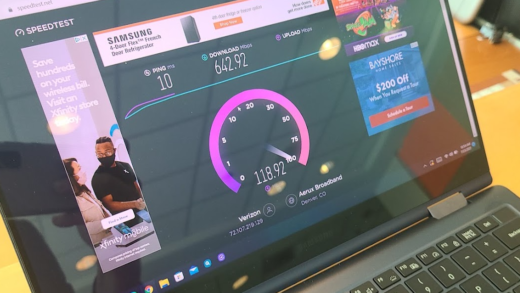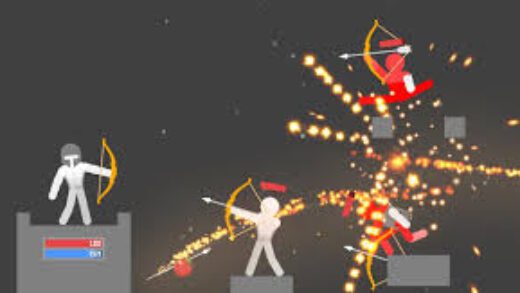USFL vs. NFL – Although the USFL and NFL are professional football leagues operating in the United States, they possess several contrasting characteristics.
The NFL has established itself as the foremost football league globally for several decades and is a recognized brand. In contrast, the USFL was established just recently, in 2022, and is striving to gain a foothold in the professional football market.
Continue reading this article to discover the significant distinctions between the two leagues.
Major vs. Minor
In sports, there are primary and secondary leagues. The primary leagues are recognized as the top-tier league or competition for a specific sport within a country.
The primary leagues in the four largest American sports are the NBA, NHL, MLB, and NFL.
In addition to the primary leagues, every sport also has secondary or developmental leagues that may be affiliated with the primary league, such as the NBA G League, or may not be. The same applies to the NFL and USFL.
The USFL competes against the NFL as a rival league without any connection or developmental link between them. However, there is a noticeable difference in the level of competition between the two leagues.
Players must participate in the NFL draft, one of the most challenging selection processes in all professional sports, to qualify for the NFL.
Although playing football at the college level is not a prerequisite for entering the NFL, most players selected in the NFL draft have played for Division 1 college teams.
Although numerous USFL players have also competed at the Division 1 level, the NFL draft handpicks the most outstanding players, while the USFL must make do with those who were not selected.
ALSO READ: Rags to Riches: The Inspiring Story Of Jerry Buss
Brand Power And Budgets
Every high school football player aspires to play in college and get drafted into the NFL.
The potential rewards of an NFL career are unparalleled; even an average NFL career can provide lifelong financial stability for a player and their family.
The top NFL players are among the world’s highest-paid athletes, with an average annual income of approximately $2.7 million.
Participating in the NFL carries immense prestige and the potential for numerous commercial opportunities off the field.
Becoming a prominent player in the NFL can increase social media followers, sponsorships, and celebrity status. The USFL pales in comparison to the NFL in this regard.
To underscore the disparity in brand power and exposure between the two leagues, the NFL has over 26 million Instagram followers, while the USFL has a mere 96,000.
League Organization
The NFL comprises 32 teams that participate in 17 regular-season games. In contrast, the USFL is a much smaller league with only eight teams, each playing 10 regular-season games.
Since the NFL is dominant, the USFL’s season occurs at a different time of year. Typically, the NFL season commences in September and concludes in February.
On the other hand, the USFL season commences in April and concludes in July. The NFL off-season is extensive, and football enthusiasts crave some on-field action by spring.
The USFL aims to leverage this by scheduling its games when the NFL is not active rather than going head-to-head with the NFL.
ALSO READ: Best Fortnite Players
Difference In Rules
The USFL has attempted to develop a distinct set of football rules to attract new viewers while competing with the NFL.
Rather than imitating the NFL’s model for professional football, the USFL has adopted a blend of NFL, college, and other minor league rules.
These are the main distinctions:
Overtime
The USFL has adopted a college football-style “shootout” rule for games that end in a tie, which could be a smart strategy for generating exciting moments and increasing interest in the league.
In this rule, if the teams are tied after regular time, they will take turns attempting a 2-point conversion from the 2-yard line.
Each team has three tries, and the best of three attempts determines the winner. If the teams are still tied after three attempts each, the game goes to sudden death.
Kickoff And Onside Kicks
One significant rule difference between the NFL and USFL is related to kickoffs and onside kicks.
The USFL has taken inspiration from the XFL and has decided to start their games with the kicking team at their 25-yard line, as opposed to the 50-yard line in the NFL.
This change aims to increase the number of kick returns in a game, which is expected to generate excitement among fans and players.
To reduce the risk of injury to players, the USFL has implemented a rule stating that the kicking team’s players cannot start any further back than the 24-yard line, eliminating their ability to build momentum.
In addition, there is a designated “set-up zone” for blockers on the receiving team, requiring at least eight blockers to be positioned between the 35 and 45-yard lines to minimize the likelihood of high-speed collisions.
The USFL has devised an alternative option to onside kicks, which may not be used in the league.
Teams can instead opt for a fourth and 12 play from their 33-yard line, where they usually kick from.
If the team converts the fourth down, they retain possession of the ball. However, the ball is turned over to the other team if they fail.
Pass Interference
How USFL referees call defensive pass interference differs significantly from NFL referees.
While a defender intentionally interfering with a receiver beyond 15 yards of the scrimmage line is still considered a spot foul, like, in the NFL, the USFL’s non-intentional defensive pass interference is penalized differently.
In the USFL, non-intentional interference by the defender results in just a 15-yard penalty, regardless of where the infraction occurs.
In addition, the USFL has a different approach to offensive pass interference.
Unlike the NFL, in the USFL, the offense can only be penalized for pass interference if it occurs on passes that have crossed the line of scrimmage.
Game Clock
To create a faster-paced game, the USFL has implemented a shorter play clock than the NFL, at 35 seconds instead of 40 seconds. The intention is to encourage teams to run more plays and reduce the time they hold onto the ball.
In addition, the USFL will halt the game clock after the first downs during the final two minutes of the first and second halves. This change aims to increase the number of plays, creating more excitement for fans as the halves close.
Two Forward Pass Rule
Like the XFL, the USFL has permitted teams to make two forward passes during a single play.
However, the first pass must be thrown behind the line of scrimmage, and both passes must also originate from behind the line of scrimmage.
Reviews
In the USFL, coaches will only have one challenge per game, which is different from the NFL, where coaches get two.
But the replay crew of officials will have the power to correct personal foul calls made on the wrong field.
Additionally, the replay crew will determine whether pass interference was committed intentionally.
ALSO READ: Memory Games To Improve Your Memory



